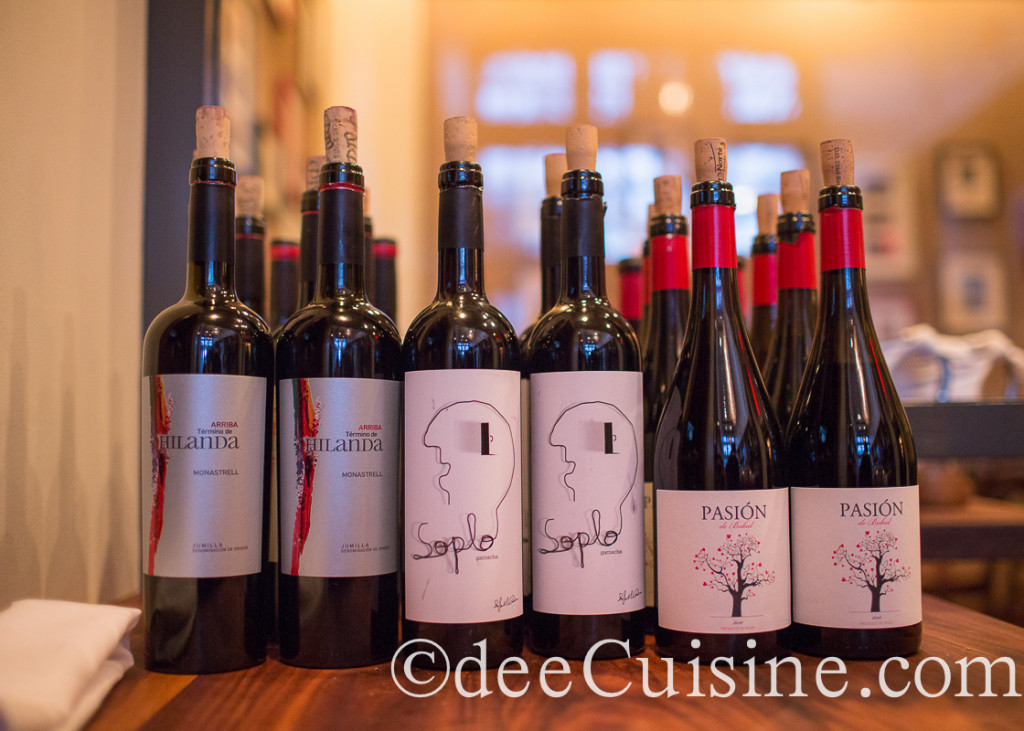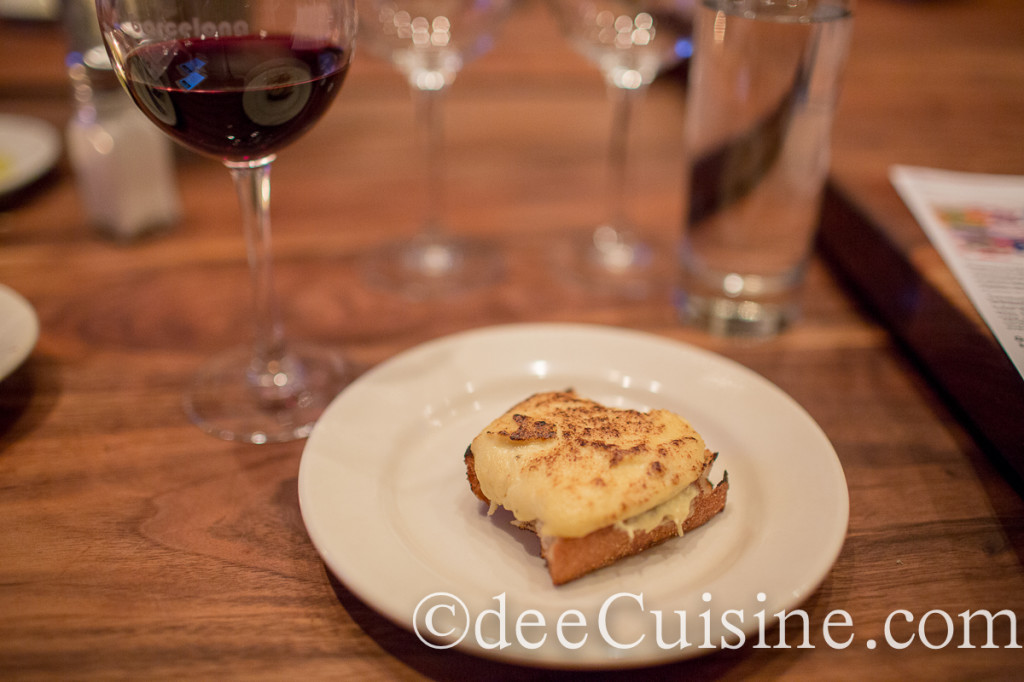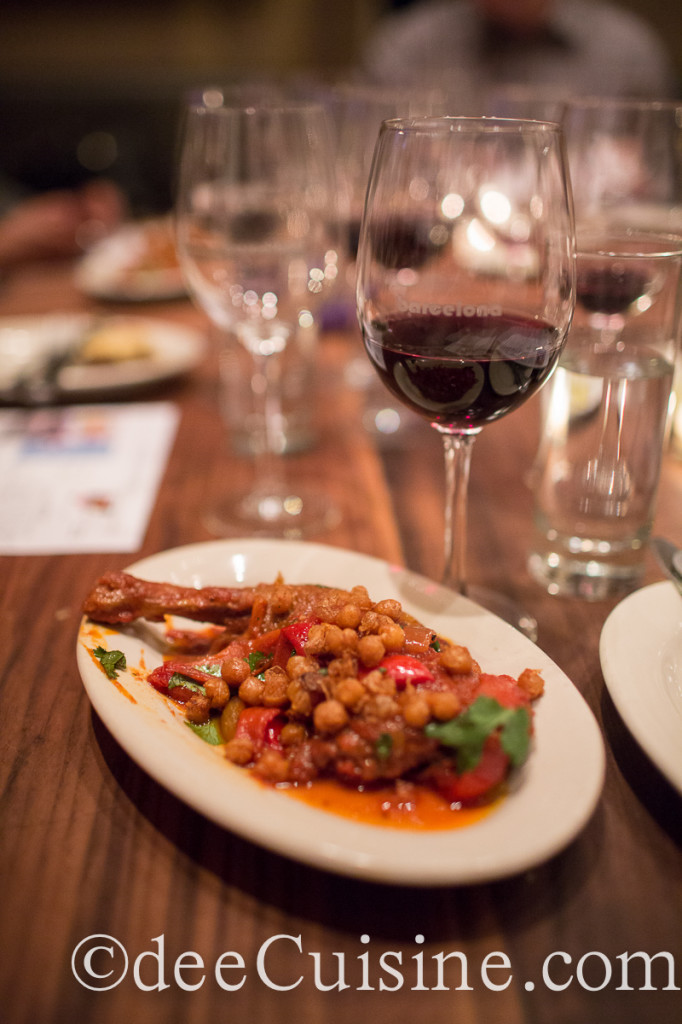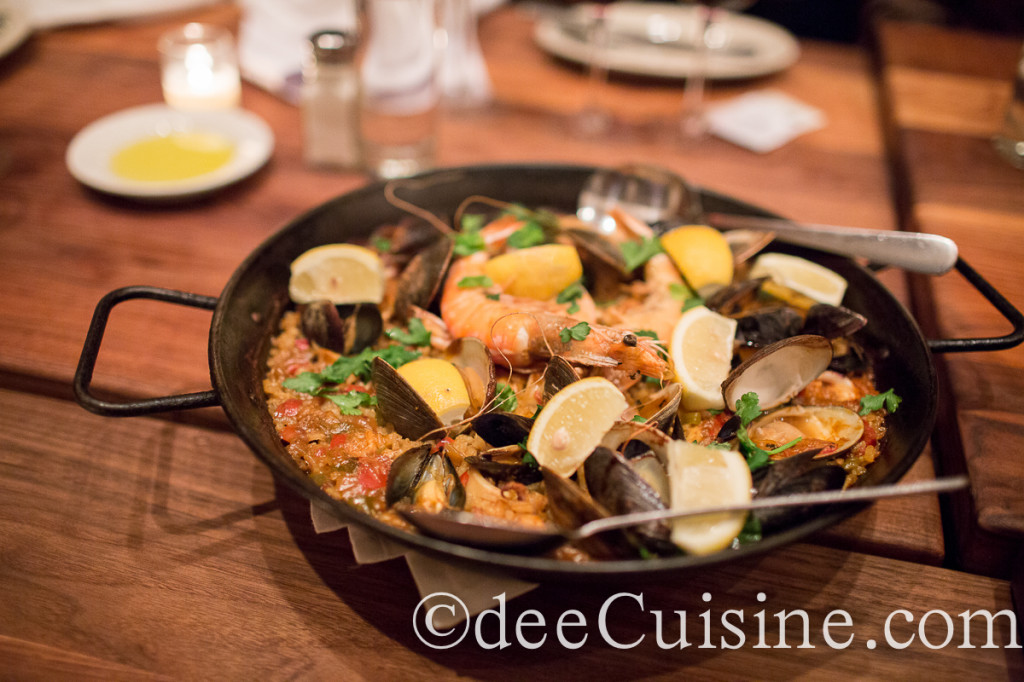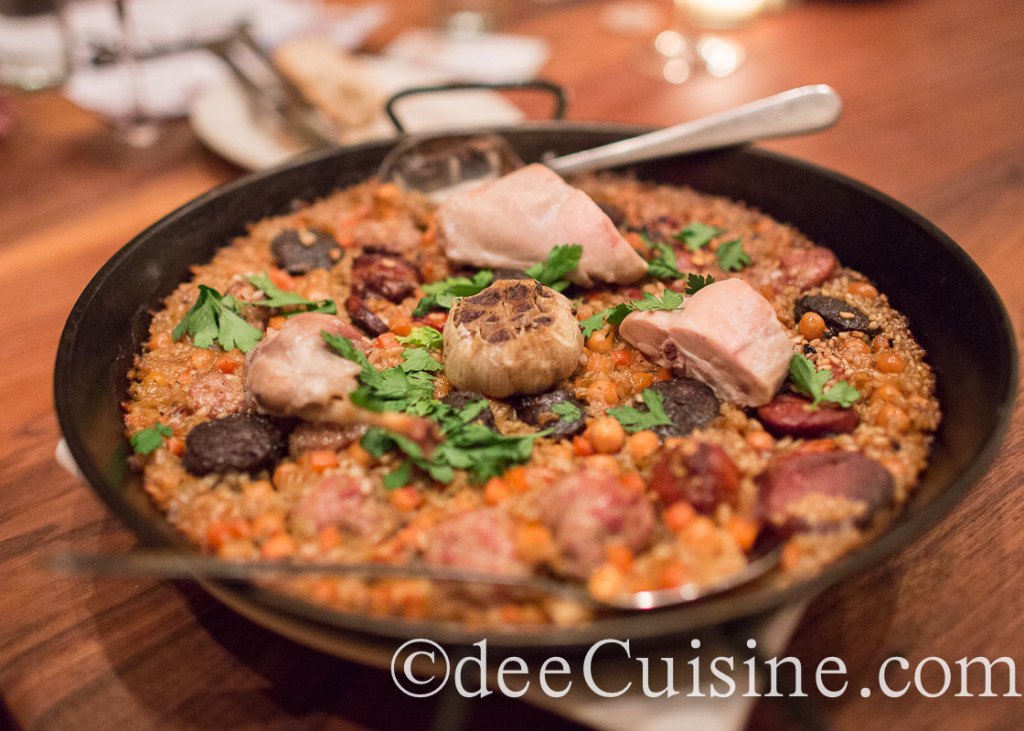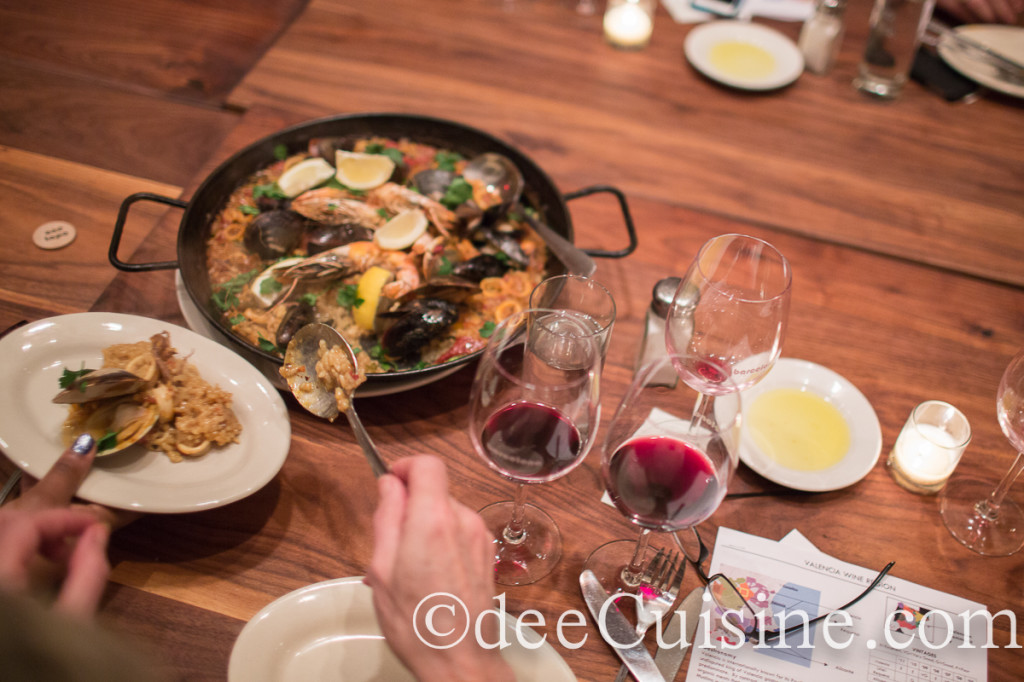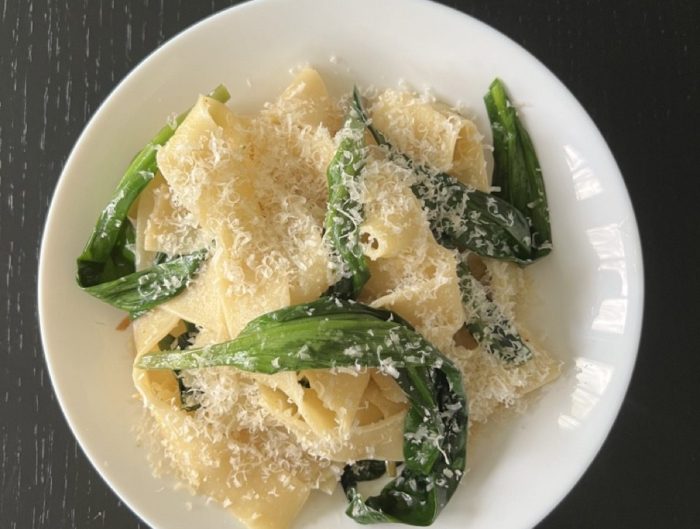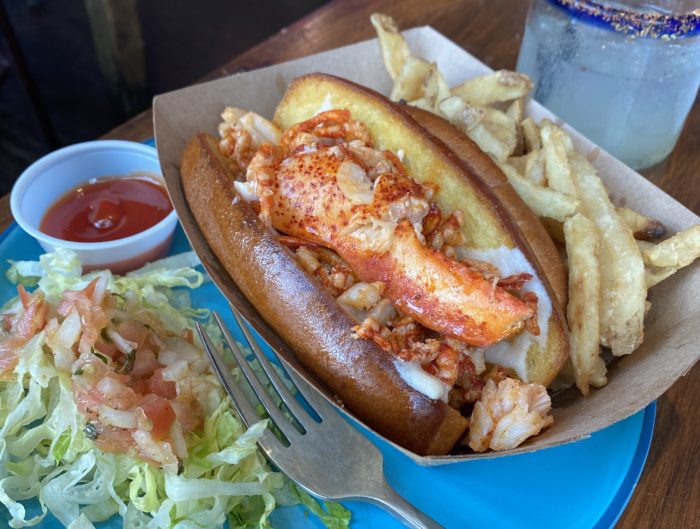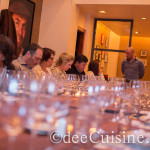The highlight of the month of March was Barcelona’s “Passport through Spain” wine series. Every Wednesday we took a wine and culinary journey through different regions of Spain – starting with Rioja, then Galacia (Read our recap here), onward to Montsant and Priorat, and finally Valencia. The classes were led by Barcelona Stamford’s wine sommelier, José Valverde. Each class featured three wine and food pairings, prepared by Chef Michael Lucente.
Of all the classes, I was most excited for this session because I loved the city when I visited it years ago. I had a feeling we were going to have a spread of different paella. Here’s a recap…
Session 4: Valencia
Pairing 1: 2010 Garnacha Tintorera, Bodegas Rafael Cambra, Soplo with Baccalà Crostini
According to José, Approximately 98% of red grapes produce clear juice. Most red wines get its color from the maceration process, where the grape skin, seeds and stems are used to add the red pigment. The grape in the first wine we tasted was Garnacha Tintorera, also known as Alicante Bouschet. This red varietal actually bleeds red juice.
Paired with the wine was a tapa we tried in session 2: Baccalà Crostini. The crostini was based off a dish Chef Michael Lucente ate while in a restaurant called Casa Montaña in Valencia, Spain. It took Chef Michael one year to perfect the recipe.
Pairing 2: 2010 Bobal, Bodegas Sierra Norte, Pasión de Bobal with Braised Guinea Hen
My favorite wine of the evening was the 2010 Bobal, Bodegas Sierra Norte, Pasión de Bobal. This smooth wine is comparable to a Malbec. It was paired with Braised Guinea Hen with fried garbanzos (chick peas), cilantro and pimientos in a tomato sauce. The meat was tender and fell off the bone. The dish reminded me of a Spanish-inspired Filipino dish called Chicken Afritada.
Pairing 3: 2009 Monastrell, Hilanda, Arriba Término with 2 kinds of Paella – Salvaje and Mariscos
José compared the Monastrell varietal to an Australian Shiraz. The wine has hints of chocolate, spices and dried fruit. Most people at the class favored this wine. It was smooth and drinkable. As we tasted the wine, two kinds of paella were brought to the table – Paella de Mariscos (Seafood Paella) and “Wild Paella,” also known as Salvaje Paella. The paella was made with chorizo, rabbit, Morcilla (blood sausage), garbanzos, and roasted garlic bulbs.
Thank you again to the Barcelona crew for a great food and wine series. Thank you José Valverde for being a wonderful instructor. I’ve learned more in your sessions than at previous wine classes I’ve taken. Thank you Chef Michael Lucente for the amazing food. Thank you Ria Rueda for bringing the series to Connecticut, and for bringing it to our attention.
All great things must come to an end. Or should it? After speaking to Barcelona’s Director of Public Relations, Ria Rueda, the series may return. You don’t have to wait for the next series to learn about Spanish wines and cuisine. Check out Barcelona’s events calendar and see what type of cooking, wine and cocktail classes they are offering at each of their nine locations.

